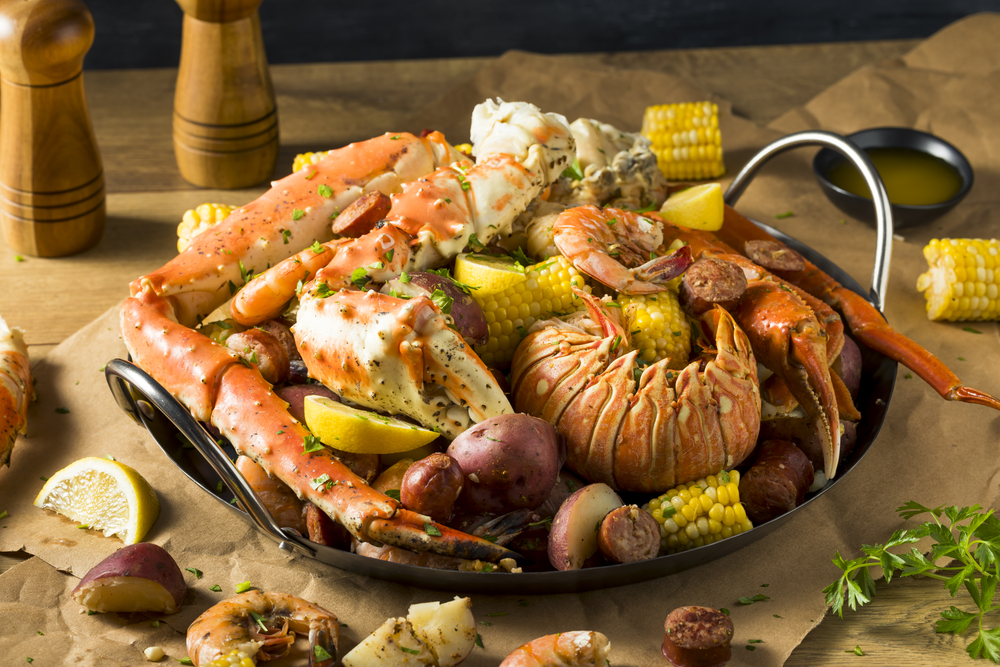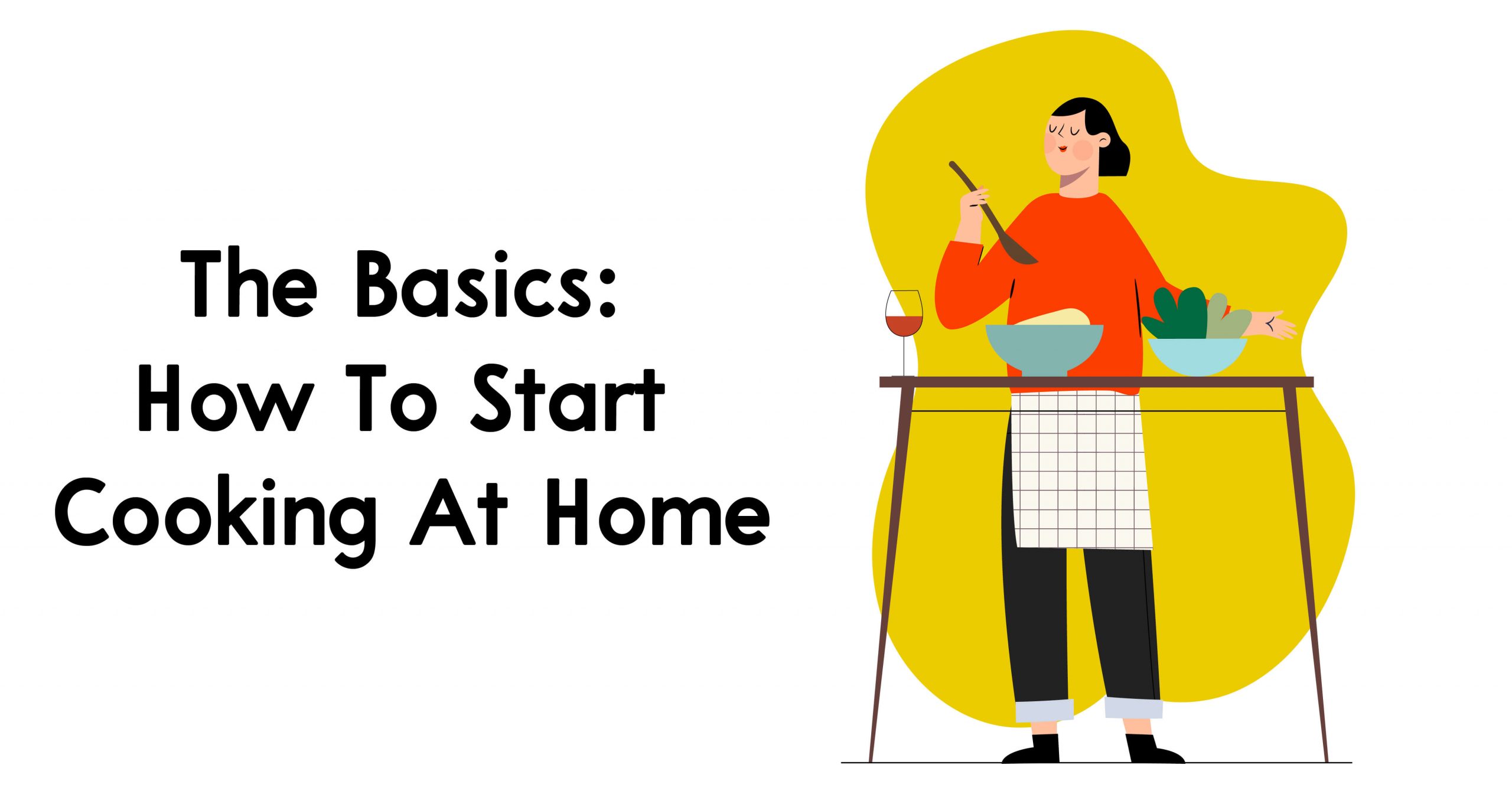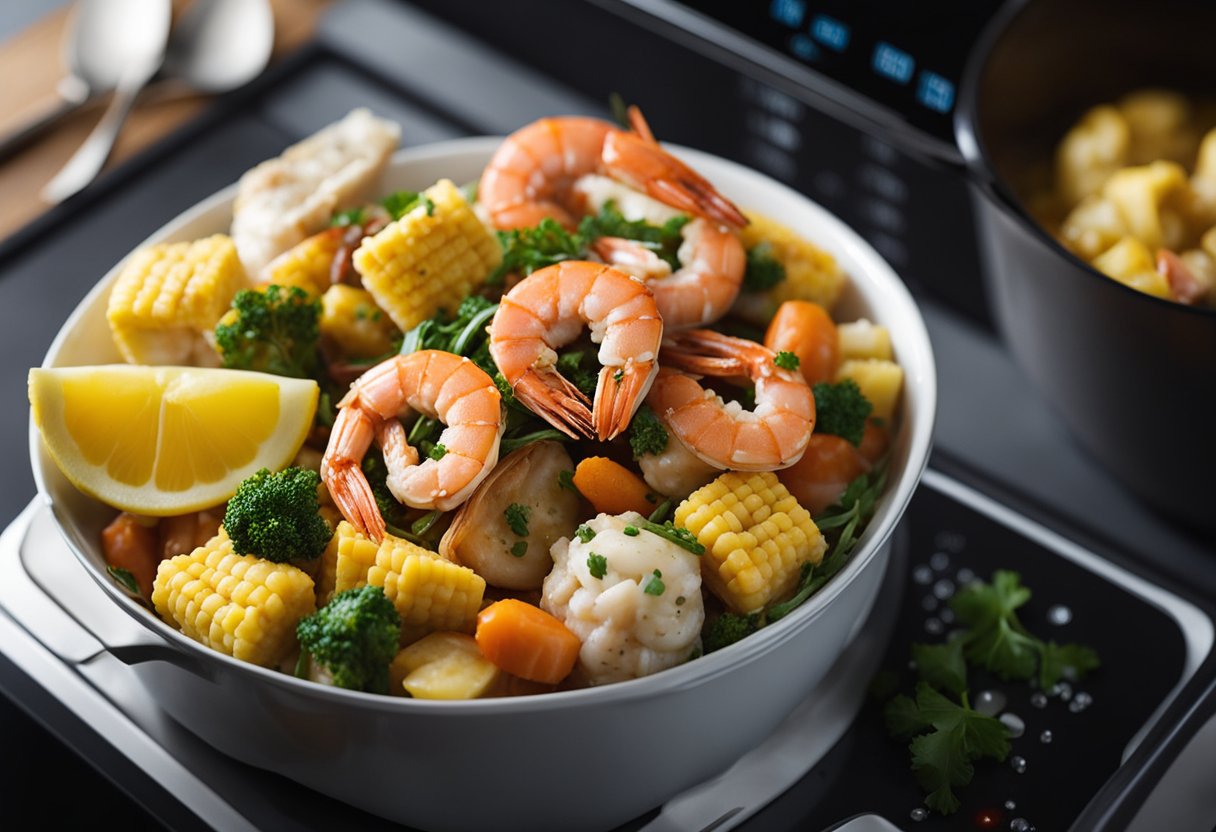Seafood can be a tricky thing to get right- if you cook it for a minute too long, it turns into something like rubber, and if you cook it a minute less than you should, it tastes like rubber! If you’re a little unsure of where your freshly-cooked shrimp lands on that spectrum, you may be asking yourself; ‘What does undercooked shrimp taste like?’
Undercooked shrimp tastes like a mixture between raw and cooked shrimp, with an unbalanced, slightly sweet, slightly savory flavor. The texture will be slightly wet and gelatinous, with a potential crunch from the undercooked shrimp shell, if you have chosen to cook your shrimp with the shell still on.
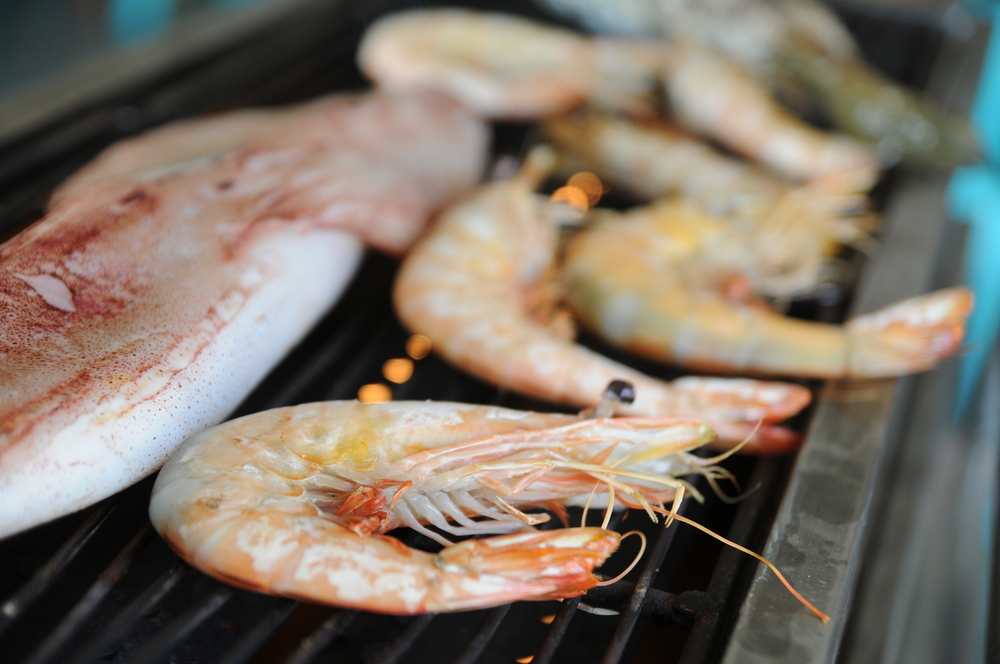
Let’s take a closer look at this!
Can You Eat Undercooked Shrimp?
Short answer? Yes, you can. Certain foods, like many different types of sushi, may contain raw shrimp- along with fish, raw crab, or raw lobster! There’s a lot of variation in sushi, so there’s a chance you could get raw shrimp anywhere that you can find sushi. Raw shrimp has significantly more health risks than undercooked shrimp, and if raw shrimp is still edible, undercooked shrimp is also edible.
However, there are several reasons that eating undercooked shrimp can be a bad idea if not done right, and you may want to know exactly why you can’t eat undercooked shrimp.
Food Poisoning and Bacteria
First and foremost, undercooked shrimp, like all improperly cooked meats, can give you food poisoning! Food poisoning varies in severity, but as a whole, none of it is pleasant. Food poisoning can hospitalize you and leave you dehydrated, or even lead to death.
Shrimp can also contain bacteria that may make you intensely ill. One example is Vibrio parahaemolyticus, which can lead to a multitude of intestinal issues such as vomiting, nausea, or diarrhea. Properly cooking meat is the best way to remove bacteria from any meat, including shrimp- it is important to remember this when cooking anything involving meat at all!
Issues With Pregnancy
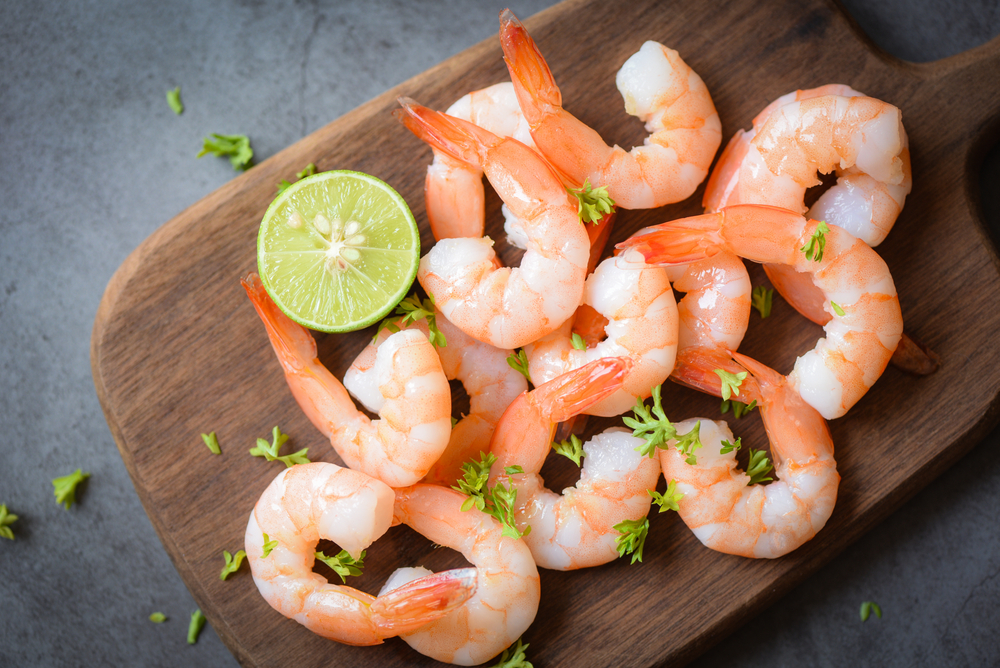
A very important thing to know is that undercooked shrimp can cause serious damage and health problems for pregnant women and their babies, as the bacteria contained in shrimp can infest a woman’s body. This can lead to extremely dangerous health complications, and should be avoided as much as possible. As a whole, it is best to entirely avoid raw shrimp while pregnant, or if you even plan to get pregnant!
Fully cooking shrimp can avoid just about all of these issues, and it is not very hard- so remember to make sure you cook your shrimp thoroughly, as it can save you a lot of pain later! If you find yourself having issues properly cooking shrimp, there are several shrimp substitutes you may want to consider in order to make your meals easier and less of a health risk.
How Can You Tell If Your Shrimp Is Undercooked?
Thankfully, there are many ways to tell if your shrimp is undercooked other than popping it in your mouth and eating it, and just about all of them are far, far healthier. Anything from the look and the feel to the shape can be an indicator of whether or not your shrimp is cooked the right way!
Check the Color of the Shrimp
One of the most thorough and reliable ways to check if your shrimp is cooked or not is to check its color. In order to do this, you first need to get a good look at what color your raw shrimp is, in order to judge the difference from before to after. Most raw shrimp is slightly translucent and somewhat gray- if your final product looks even remotely like it looked before you cooked it, chances are you haven’t cooked it enough.
When shrimp is cooked, it will look entirely different. Your shrimp will turn from gray to white with undertones of pink and red, and entirely opaque- if you can see into or through the shrimp, it is not quite done yet.
If your shrimp has cooked all the way into a more vibrant pink or reddish color with hints of orange, it is overdone! Overcooked shrimp does not have the potential health issues associated with undercooked or raw shrimp, but it can lead to an unpleasant dining experience- overcooked shrimp can be tough, rubbery and tasteless, throwing a wrench into any potentially fantastic dish you may have cooked up.
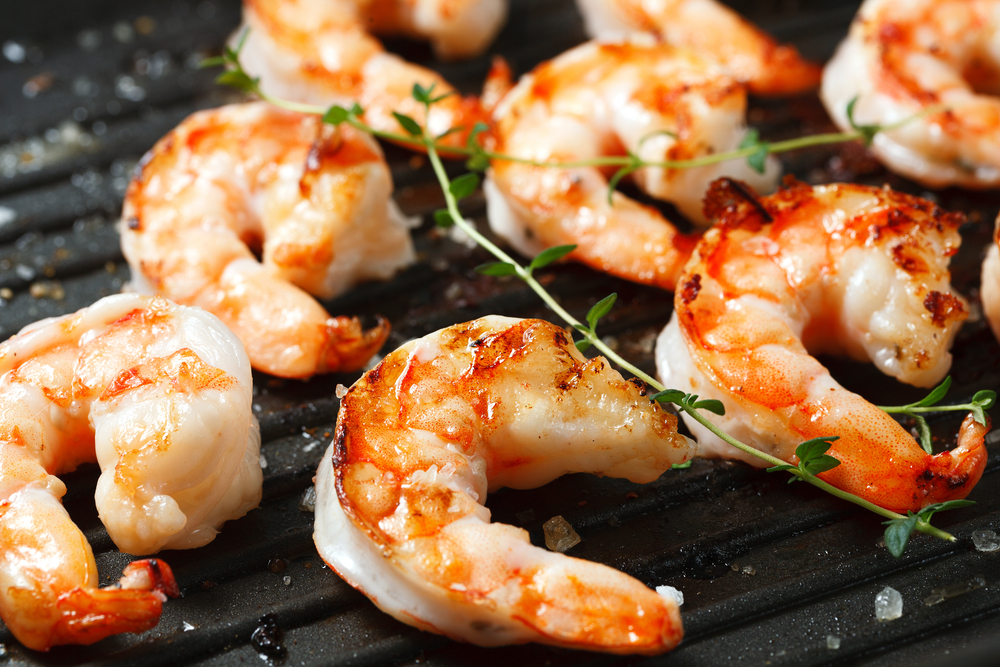
If your shrimp have even a hint of gray, or are even slightly translucent, it is still undercooked. There is no ‘close enough’ when dealing with seafood! Make sure your shrimp have an even color all around- you may need to flip the shrimp over or grasp it with tongs in order to check all of its sides.
Check the Shape of the Shrimp
One method of testing if your shrimp is properly cooked or not is looking at the shape of each individual shrimp. This method is quite possibly the easiest, though not as thorough or reliable as checking the shrimp’s color or temperature- after all, all it requires is a quick, cursory glance.
A raw shrimp will be somethat straight, or at a slight curve, with their tails at something resembling an 85 or 90-degree angle. Raw shrimp are very flexible, and so the shape of your shrimp may vary. Because of that, in this method, it is very important to take a good look at the shape of the shrimp beforehand- but no matter what, a raw shrimp will be fairly straight, especially when compared to a cooked one.
An undercooked shrimp will still be relatively straight, to a varying degree, or have only a slightly more pronounced curve than a raw shrimp. A good trick to keep in mind is this; if the shrimp is shaped like a ‘U’, straightened with a slight curve, it is likely still undercooked.
Following the letter analogy, a shrimp that is properly cooked throughout its entire body will have a good curl on it- the shrimp will resemble the letter ‘C’. As the shrimp cooks, its muscles will shrink and contract, giving a properly cooked shrimp its signature ‘C’ shape- C is the key!
As cooking leads to the muscles contracting, the more your shrimp cook, the more they will curl. As the shrimp cooks, the curl grows tighter, and can just about form a complete circle- with this method, this is how you know your shrimp is overcooked. An overcooked shrimp can take on an ‘O’ shape.
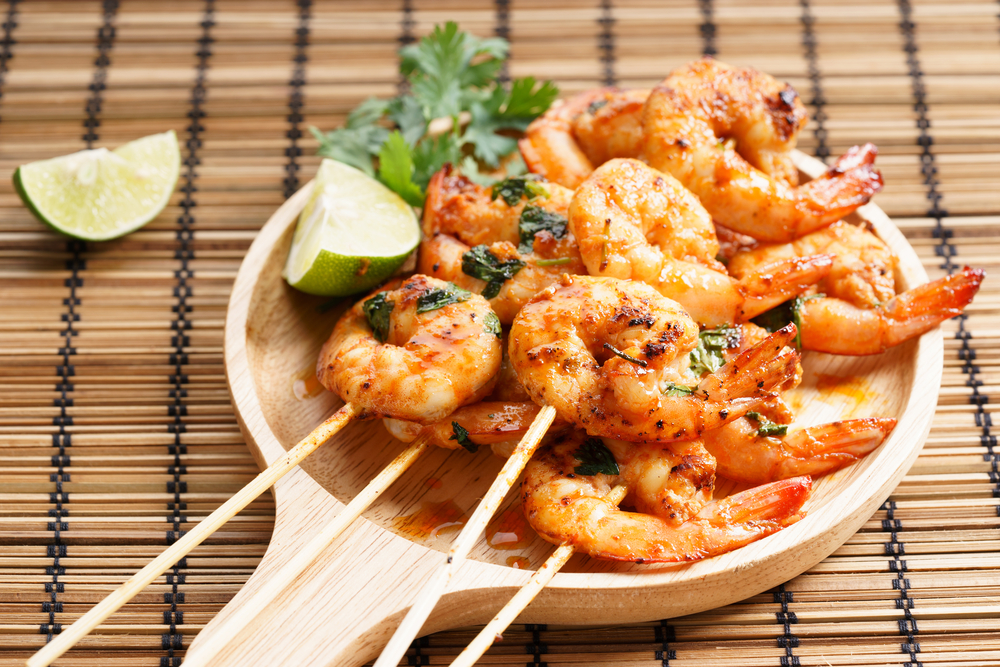
So, remember the following; a shrimp that is shaped like a ‘U’ is not ready yet. A shrimp that is shaped like an ‘O’ was ready a while ago! Finally, a shrimp that is shaped like a ‘C’ is just right. This is the sweet spot!
Check the Texture of the Shrimp
If you are willing to get your hands a little dirty- and you should, you’re already cooking!- you can use yet another one of your senses to test the readiness of your shrimp: Touch! The feel of a shrimp changes as it cooks, much like its color and shape, as heat changes the composition of the shrimp itself.
Raw shrimp will be fleshy and flexible, feeling much like raw crab or lobster, or even raw fish. Undercooked shrimp, as well, will feel somewhat like this- though as they cook, they might take on a bit of a ‘spongy’ feel. If you can press the shrimp down with your finger, a fork, a knife, or a spatula and it readily springs back up, then your shrimp is still undercooked, and still has some cooking to do.
A perfectly cooked shrimp will be firm, but not resist when you press down on it. If you press down with your finger or your utensil of choice, it should dent a little- but not too much.
Overcooked shrimp, on the other hand, will be extremely tough and downright refuse to budge when you press on it. This doesn’t bode well, either- if it’s tough to press on, imagine how tough it will be to chew! It may be pleasant for a jaw workout, but not a meal.
To cook your shrimp well, it’s important to find a happy medium between the two extremes- you want it to be somewhere between ‘loose, fleshy and floppy’ and ‘firm, with no give’. Your stomach and your mouth will both thank you for sparing them from some misery!
Check the Temperature of the Shrimp
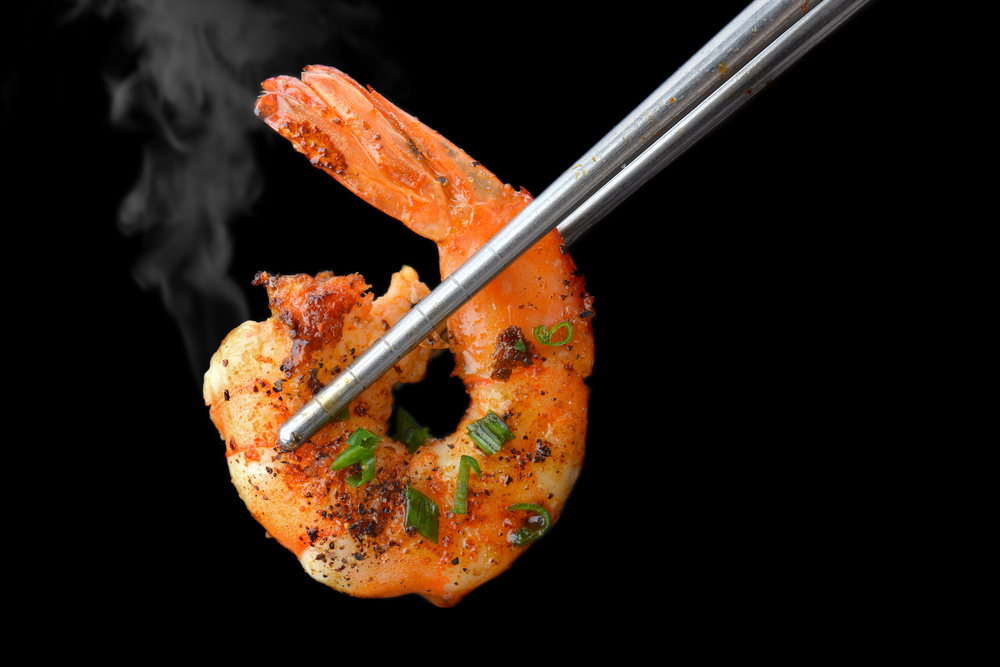
Most meats will benefit from a temperature check, especially on a grill. If you cook with any regularity at all, you probably already have a cooking thermometer- so you have all you need to make sure your shrimp are properly cooked. If you don’t have a cooking thermometer, it’s always a great investment!
This is a great method if you have any sensory issues, or perhaps you’re new to the field of cooking and do not trust your senses to guide you just yet. It’s also one of the easiest and quite possibly the most reliable of all the methods we’ve listed so far, so if you do it right, you’ll have perfectly cooked shrimp every time!
While a heat source of 165 degrees Fahrenheit will often have your shrimp cooked to perfection, you will want to measure a different heat- the heat of the shrimp themselves. When cooking shrimp, periodically check the internal temperature of the shrimp with your thermometer. When the internal temperature reaches 120 degrees Fahrenheit (roughly 48 degrees celsius), your shrimp is cooked, and it is safe for human consumption. Anything under 120 degrees Fahrenheit can be considered ‘undercooked’, and can come with the associated health risks.
How Can You Fix Your Undercooked Shrimp?
Thankfully, shrimp is already an easy food to cook, and fixing undercooked shrimp is just as easy. Hopefully, you haven’t turned your heat source off yet, whether it’s a grill or a stovetop; if it’s still running, just throw your shrimp back into the pan and cook them until one of the previously mentioned methods helps you verify that your shrimp is done!
If your grill or stove is off, then simply turning it back on should suffice- if your shrimp is towing that line between undercooked and just right, and you’re not sure if it’s done or not, then simply throwing it back into the pan should cook it through, even on a lower heat. Just remember to keep an eye on it so it doesn’t turn into that tough, chewy overcooked shrimp you want to avoid!
In Conclusion

There’s a lot of information to absorb about undercooked shrimp, and it can be somewhat difficult to consider all the possibilities and options regarding it. To wrap it up simply, here are a few quick points to remember!
- You can eat raw and undercooked shrimp, and many people frequently do! However, it’s very important to keep the potential health issues of eating any raw meat in mind.
- Undercooked shrimp can cause a variety of illnesses, including food poisoning or bacterial infection.
- If undercooked shrimp is eaten by a pregnant woman, the potential bacterial infection can have dangerous or even deadly consequences for both the mother and the baby. Undercooked shrimp is best avoided by pregnant women entirely.
- There are a number of ways you can check if your shrimp is undercooked or not, most of them involving your very own senses!
- You can check if your shrimp is finished by their color, shape, or feel.
- You could also use the shrimp’s internal temperature.
- It’s very easy to fix your shrimp if it turns out undercooked.
- Simply throwing it back onto heat for a short amount of time can finish it up easily!
It’s a lot to remember, but if you remember the basics, you can make perfectly cooked shrimp very easily- so go try it out!



